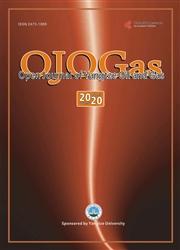The Effects of Fluid Rheology and Drillstring Eccentricity on Drilling Hydraulics
引用次数: 4
Abstract
Accurate determination of hydraulic parameters such as pressure losses, equivalent circulation density (ECD), etc. plays profound roles in drilling, cement-ing and other well operations. Hydraulics characterization requires that all factors are considered as the neglect of any could become potential sources of errors that would be detrimental to the overall well operation. Drilling Hydraulics has been extensively treated in the literature. However, these works almost entirely rely on the assumption that the drill string lies perfectly at the center of the annulus—the so-called “concentric annulus”. In reality, concentricity is almost never achieved even when centralizers are used. This is because of high well inclination angles and different string geometries. Thus, eccentricity exists in practical oil and gas wells especially horizontal and extended reach wells (ERWs) and must be accounted for. The prevalence of drillstring (DS) eccentricity in the annulus calls for a re-evaluation of existing hydraulic models. This study evaluates the effect of drilling fluid rheology types and DS eccentricity on the entire drilling hydraulics. Three non-Newtonian fluid models were analyzed, viz: Herschel Bulkley, power law and Bingham plastic models. From the results, it was observed that while power law and Bingham plastic models gave the upper and lower hydraulic values, Herschel Bulkley fluid model gave annular pressure loss (APL) and ECD values that fall between the upper and lower values and provide a better fit to the hydraulic data than power law and Bingham plastic fluids. Furthermore, analysis of annular eccentricity reveals that APLs and ECD decrease with an increase in DS eccentricity. Pressure loss reduction of more than 50% was predicted for the fully eccentric case for Herschel Bulkley fluids. Thus, DS eccentricity must be fully considered during well planning and hydraulics designs.流体流变学和钻柱偏心对钻井水力学的影响
准确确定压力损失、当量循环密度(ECD)等水力参数对钻井、固井等井作业具有重要意义。水力特性要求考虑所有因素,忽略任何因素都可能成为潜在的误差来源,从而对整个井的运行造成不利影响。钻井水力学在文献中得到了广泛的研究。然而,这些工作几乎完全依赖于钻柱完全位于环空中心的假设,即所谓的“同心环空”。实际上,即使使用扶正器,也几乎无法实现同心圆。这是由于高井斜角和不同的管柱几何形状。因此,在实际的油气井中,特别是水平井和大位移井中,偏心是存在的,必须加以考虑。钻柱(DS)偏心在环空的普遍存在要求对现有水力模型进行重新评估。研究了钻井液流变类型和DS偏心对整个钻井水力学的影响。分析了三种非牛顿流体模型,即Herschel Bulkley、幂律和Bingham塑性模型。从结果中可以看出,幂律和Bingham塑性模型给出了水力上下限,而Herschel Bulkley流体模型给出的环空压力损失(APL)和ECD值介于上下限之间,比幂律和Bingham塑性模型更能拟合水力数据。此外,对环空偏心率的分析表明,随着DS偏心率的增加,api和ECD降低。对于完全偏心的Herschel Bulkley流体,预计压力损失降低50%以上。因此,在井规划和水力设计中必须充分考虑DS偏心。
本文章由计算机程序翻译,如有差异,请以英文原文为准。
求助全文
约1分钟内获得全文
求助全文

 求助内容:
求助内容: 应助结果提醒方式:
应助结果提醒方式:


